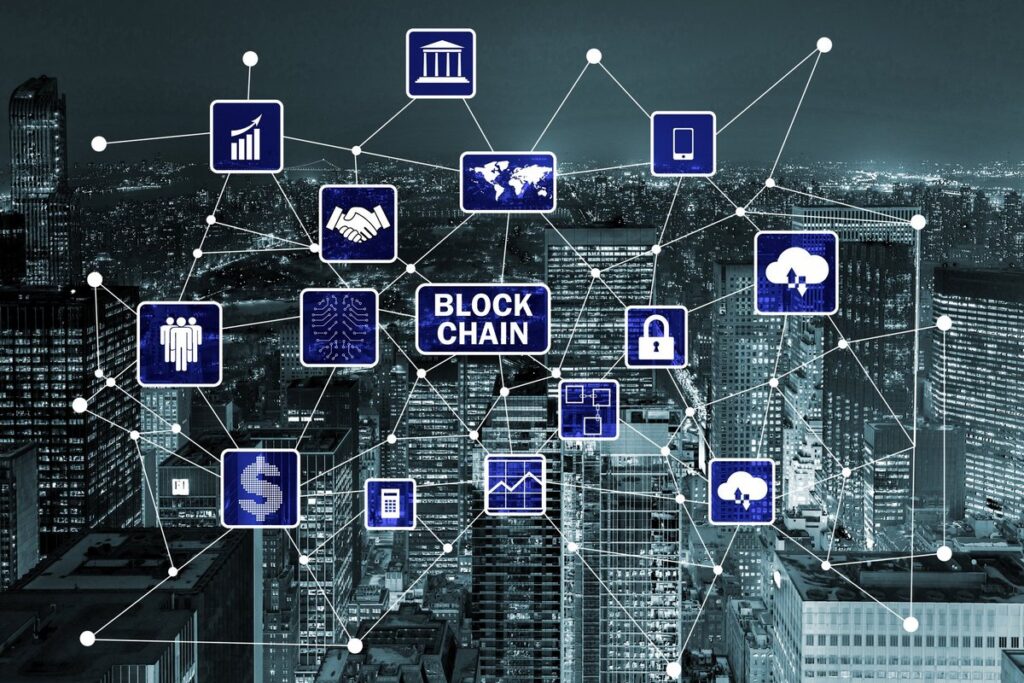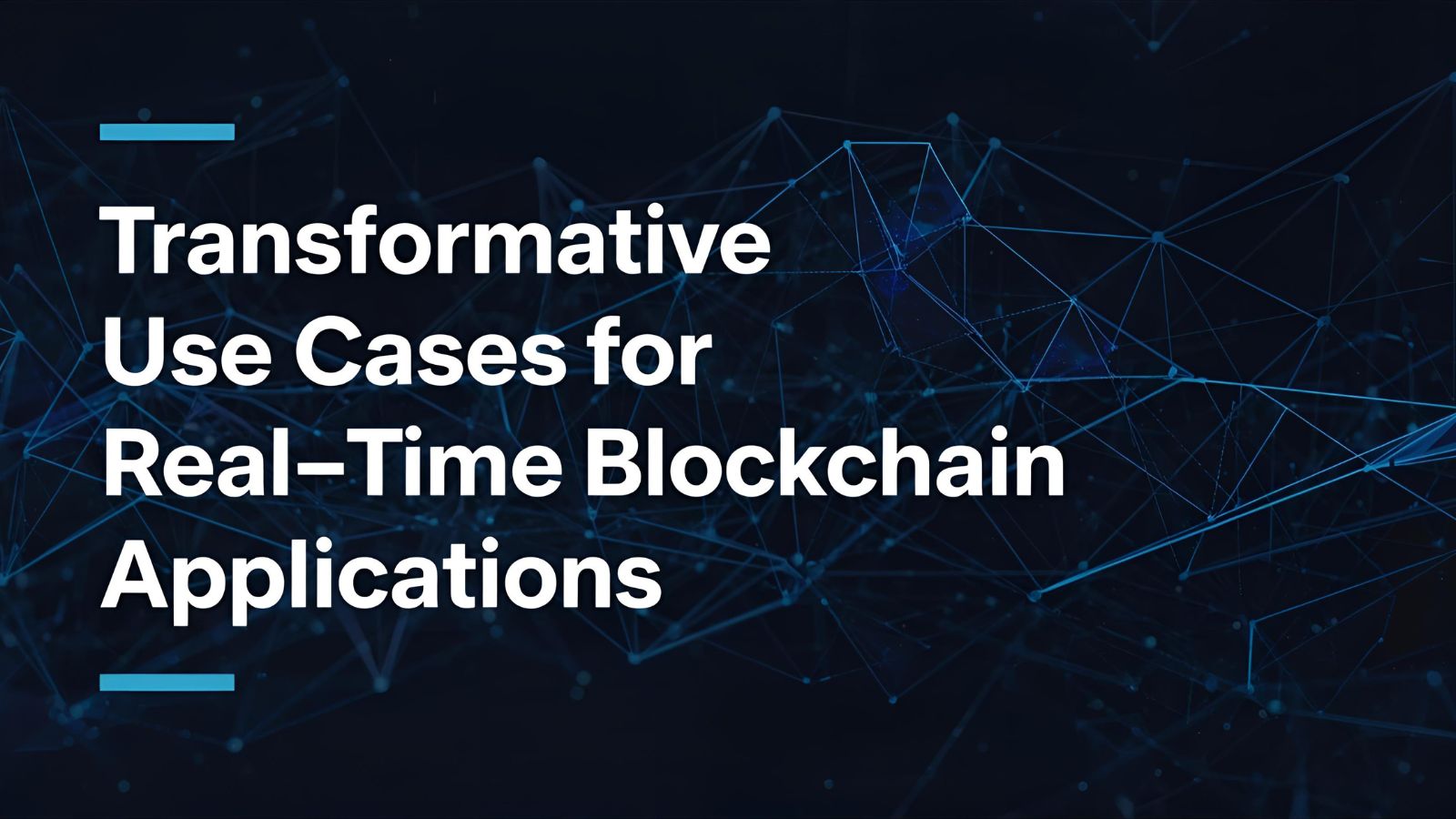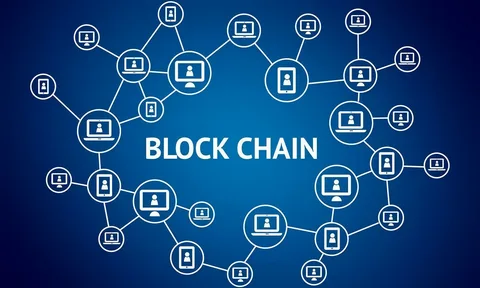The blockchain landscape is experiencing a transformative moment. Somnia has officially unveiled its groundbreaking Data Streams technology, designed specifically to power real-time blockchain applications with unprecedented speed and efficiency. For years, developers have struggled with the inherent latency limitations of blockchain networks, watching their applications lag behind traditional Web2 counterparts. Today marks a pivotal shift in this narrative. Somnia’s innovative infrastructure solution addresses the critical bottleneck that has prevented real-time blockchain applications from achieving mainstream adoption. By introducing a sophisticated data streaming framework, Somnia enables developers to build responsive, instantaneous decentralized applications that rival centralized platforms in performance. This announcement signals a new era where blockchain technology can finally deliver the real-time experiences that modern users demand and expect.
The Evolution of Real-Time Blockchain Applications
Real-Time Challenge
Building real-time blockchain applications has historically been an exercise in compromise. Traditional blockchain architectures rely on block confirmations that introduce inherent delays—sometimes spanning several seconds or even minutes. For applications requiring instant feedback, such delays prove devastating to user experience. Gaming platforms become unplayable when actions take seconds to register. Trading interfaces miss critical market opportunities due to stale data. Social platforms feel sluggish compared to their Web2 competitors.
Somnia recognized these fundamental limitations and engineered Data Streams from the ground up to eliminate them. The system fundamentally reimagines how blockchain data flows to applications, replacing periodic polling with continuous streaming. This architectural shift enables real-time blockchain applications to respond to on-chain events within milliseconds rather than seconds, closing the performance gap that has separated blockchain from traditional technology stacks.
Why Real-Time Matters for Blockchain Adoption
The importance of real-time capabilities extends beyond mere convenience. User expectations have been shaped by decades of responsive digital experiences. When applications feel slow or unresponsive, users abandon them regardless of underlying technological benefits. This phenomenon has significantly hindered blockchain adoption, as even technically sound projects struggle to retain users frustrated by poor responsiveness.
Real-time blockchain applications powered by Somnia’s Data Streams change this dynamic entirely. By delivering instant feedback and seamless interactions, these applications can compete directly with centralized alternatives. Users no longer need to sacrifice experience for decentralization, removing a major adoption barrier that has plagued the industry for years.
How Somnia Data Streams Enable Real-Time Blockchain Applications
Core Technology Architecture
Somnia’s Data Streams infrastructure represents a sophisticated engineering achievement. At its foundation lies a high-performance message bus capable of processing tens of thousands of events per second. This bus connects directly to blockchain networks, monitoring on-chain activity with extreme precision. When relevant events occur—transactions confirm, smart contracts emit events, or state changes happen—the system instantly captures and broadcasts this information to subscribed applications.
The architecture employs WebSocket connections for bidirectional communication, maintaining persistent links between the infrastructure and real-time blockchain applications. Unlike traditional REST APIs that require constant polling, WebSocket connections allow the server to push data immediately when events occur. This push model eliminates polling overhead while dramatically reducing latency, enabling the millisecond-level responsiveness that defines true real-time experiences.
Advanced Streaming Capabilities
Beyond basic event broadcasting, Somnia Data Streams includes sophisticated filtering and routing mechanisms. Developers building real-time blockchain applications can define precise subscription criteria, ensuring applications receive only relevant events. This selective streaming reduces bandwidth consumption and processing overhead, allowing applications to scale efficiently even under high load conditions.
The platform supports complex filtering logic including multi-contract subscriptions, parameter-based filtering, and composite event patterns. A DeFi application might subscribe specifically to large transactions exceeding certain thresholds, while a gaming platform could filter for events related to specific player addresses. This flexibility ensures real-time blockchain applications receive exactly the data they need without unnecessary noise.
Guaranteed Delivery and Reliability
Reliability stands as a cornerstone of Somnia’s design philosophy. Real-time blockchain applications cannot tolerate missed events or data loss, as such failures could result in inconsistent state or user-facing errors. The Data Streams platform implements multiple reliability mechanisms to ensure every event reaches its destination.
Acknowledgment protocols verify successful delivery, triggering automatic retries for failed transmissions. Event sequencing guarantees maintain correct ordering even when network conditions cause packets to arrive out of sequence. During temporary disconnections, the system queues events and synchronizes missed data upon reconnection, ensuring real-time blockchain applications never lose critical updates.
Transformative Use Cases for Real-Time Blockchain Applications
Next-Generation Blockchain Gaming
The gaming industry represents perhaps the most compelling use case for real-time blockchain applications. Traditional blockchain games have suffered from frustrating delays that break immersion and diminish enjoyment. Players accustomed to responsive gaming experiences find blockchain alternatives unacceptable when actions take seconds to register on-chain.
Somnia’s Data Streams fundamentally transforms blockchain gaming possibilities. Developers can now build truly responsive games where player actions reflect instantly across all connected clients. Imagine multiplayer battles where combat resolves in real-time, racing games where positions update smoothly, or collaborative building experiences where multiple players interact seamlessly. These experiences become possible when real-time blockchain applications eliminate the latency barriers that previously made them impractical.
Several innovative gaming studios have already begun developing on Somnia’s platform. Early demonstrations showcase massively multiplayer environments supporting thousands of concurrent players with fluid interactions. Character movements, inventory changes, and world state updates propagate instantly, creating experiences indistinguishable from traditional gaming platforms while maintaining blockchain’s benefits of true asset ownership and transparent game mechanics.
High-Frequency DeFi Trading Platforms
Decentralized finance demands precision timing and instant access to market data. Traders operating in DeFi markets need real-time blockchain applications that deliver price updates, execute orders quickly, and alert users to critical events like liquidations or arbitrage opportunities. Traditional polling-based approaches introduce dangerous delays that can result in missed opportunities or unexpected losses.
Somnia enables professional-grade DeFi trading interfaces comparable to centralized exchanges. Price feeds update in real-time as oracle data arrives on-chain. Order books reflect changes instantly as trades execute. Liquidity pool analytics update continuously, giving traders the information advantage necessary for successful strategies. These capabilities transform DeFi from a slower alternative into a competitive trading environment.
Advanced trading strategies become viable with real-time blockchain applications. Arbitrage bots can respond to price discrepancies within milliseconds, capturing opportunities that vanish almost instantly. Automated market makers can adjust parameters dynamically based on real-time market conditions. Risk management systems can trigger protective actions the moment threatening conditions emerge, protecting user funds more effectively than time-delayed alternatives.
Live Social and Content Platforms
Social interactions thrive on immediacy. Users expect their posts to appear instantly, comments to populate in real-time, and notifications to arrive without delay. Building social platforms as real-time blockchain applications has historically proven challenging due to blockchain latency, but Somnia’s infrastructure makes responsive social experiences achievable.
Decentralized social platforms powered by Data Streams deliver experiences matching or exceeding centralized competitors. Posts appear immediately in followers’ feeds. Likes, comments, and shares update in real-time across all connected clients. Live streaming integrations enable content creators to interact with audiences instantly while maintaining blockchain’s benefits of content ownership and transparent monetization.
Content creators particularly benefit from real-time blockchain applications in the social space. Earnings from tips, subscriptions, and content sales appear instantly in their wallets. Engagement metrics update continuously, providing immediate feedback on content performance. Creator-fan interactions feel natural and responsive, fostering stronger community connections than delayed blockchain alternatives could achieve.
Enterprise Supply Chain Management
Enterprise organizations exploring blockchain for supply chain tracking require real-time blockchain applications that integrate seamlessly with existing business processes. Supply chains involve numerous stakeholders tracking goods through complex logistics networks. Real-time visibility into shipment locations, custody transfers, and quality checkpoints provides significant operational advantages.
Somnia’s platform enables enterprise-grade supply chain solutions where stakeholders monitor logistics in real-time. When shipments move between facilities, updates propagate instantly to all authorized parties. Temperature sensors in refrigerated transport trigger immediate alerts if conditions deviate from requirements. Customs clearances, quality inspections, and delivery confirmations appear the moment they occur on-chain, eliminating information delays that previously caused operational inefficiencies.
The transparency inherent in real-time blockchain applications benefits all supply chain participants. Manufacturers gain visibility into component deliveries, optimizing production schedules. Distributors track inventory movements precisely, reducing wasteful buffer stock. Retailers provide customers with accurate delivery estimates based on real-time location data. This coordinated visibility reduces costs while improving service quality throughout the supply chain.
Technical Implementation of Real-Time Blockchain Applications
Developer Integration Process
Somnia has prioritized developer experience in designing the Data Streams platform. Implementing real-time blockchain applications requires minimal code, allowing developers to add streaming capabilities to existing projects quickly. The integration process typically involves three straightforward steps: authentication, subscription configuration, and event handling.
The platform provides comprehensive SDKs for popular programming languages including JavaScript, TypeScript, Python, Rust, and Go. Each SDK abstracts the complexity of WebSocket management, connection pooling, and error handling, allowing developers to focus on application logic rather than infrastructure concerns. Code examples throughout the documentation demonstrate common patterns for building real-time blockchain applications across different use cases.
Authentication utilizes API keys generated through Somnia’s developer portal. These keys support fine-grained permissions, allowing developers to restrict access to specific networks, contracts, or event types. Rate limiting protects infrastructure from abuse while providing generous quotas suitable for most real-time blockchain applications. Enterprise customers can request dedicated capacity for applications requiring guaranteed throughput.
Optimizing Performance and Reliability
Building production-quality real-time blockchain applications requires attention to performance optimization and fault tolerance. Somnia provides several tools and best practices to help developers achieve optimal results. Local caching strategies reduce redundant requests while ensuring data freshness through cache invalidation mechanisms. Connection pooling distributes load across multiple stream connections, improving throughput for high-volume applications.
Error handling patterns form a critical component of reliable real-time blockchain applications. The Somnia SDK includes built-in retry logic with exponential backoff, automatically recovering from transient failures without application-level intervention. Circuit breaker patterns prevent cascading failures when sustained issues occur. Fallback mechanisms allow applications to degrade gracefully, maintaining core functionality even when streaming connectivity temporarily fails.
Monitoring and observability tools help developers understand how their real-time blockchain applications perform in production. Somnia’s dashboard provides real-time metrics on connection status, event throughput, latency distributions, and error rates. Custom alerting rules notify teams when metrics exceed defined thresholds, enabling proactive issue resolution before users experience problems.
Security Considerations for Real-Time Applications
Security remains paramount when building real-time blockchain applications that handle sensitive user data or financial transactions. Somnia implements comprehensive security measures throughout the Data Streams platform. All data transmissions utilize TLS encryption, protecting information from interception during transit. Authentication mechanisms verify the identity of connecting applications, preventing unauthorized access to event streams.
Developers should implement additional security layers within their real-time blockchain applications. Input validation ensures received events conform to expected schemas, protecting against malformed data. Authorization checks verify users have appropriate permissions before displaying sensitive information. Rate limiting on the application side prevents individual users from overwhelming backend systems with excessive subscription requests.
For applications handling particularly sensitive data, Somnia offers private deployment options where infrastructure remains isolated from public networks. These dedicated environments provide additional security guarantees while maintaining the performance characteristics of the shared platform. Compliance with industry standards like SOC 2 and ISO 27001 ensures real-time blockchain applications meet regulatory requirements in regulated industries.
Comparing Real-Time Blockchain Applications to Traditional Approaches
Performance Advantages Over Polling
Traditional blockchain applications rely on polling—repeatedly querying nodes to check for new data. This approach introduces unavoidable latency equal to the polling interval. Applications polling every second miss events occurring between polls and always operate on data at least one second stale. More aggressive polling reduces latency but multiplies infrastructure costs and strains blockchain node resources.
Real-time blockchain applications built on Somnia’s Data Streams eliminate polling entirely. The push-based architecture delivers events the moment they occur on-chain, reducing latency to single-digit milliseconds. This performance improvement isn’t incremental—it represents a qualitative leap enabling entirely new application categories. The responsiveness gap between blockchain and traditional technology stacks essentially disappears, removing a fundamental adoption barrier.
Cost efficiency favors real-time blockchain applications as well. Polling generates continuous load on blockchain nodes regardless of actual event frequency, wasting resources during quiet periods. Streaming connections remain idle when no events occur, consuming minimal resources. Organizations implementing Data Streams typically report infrastructure cost reductions of fifty to seventy percent compared to polling-based architectures.
User Experience Improvements
User experience determines application success in competitive markets. Applications that feel slow or unresponsive lose users to more polished alternatives regardless of technological superiority. The responsiveness of real-time blockchain applications eliminates a major friction point that has hindered blockchain adoption.
Consider a practical example: a blockchain-based auction platform. With traditional polling, bid updates might take several seconds to appear, creating confusion about current prices and potentially causing users to miss opportunities. Real-time blockchain applications display new bids instantly the moment they confirm on-chain, creating a smooth auction experience matching or exceeding centralized platforms. Users can confidently participate knowing they see accurate, current information.
The psychological impact of responsiveness extends beyond mere convenience. Instant feedback creates a sense of control and engagement that keeps users invested in applications. When actions produce immediate visible results, users feel their interactions matter. This engagement drives higher retention and more frequent usage, critical metrics for application success.
The Future Landscape of Real-Time Blockchain Applications
Emerging Application Categories
As real-time blockchain applications become more prevalent, entirely new application categories are emerging. Collaborative productivity tools enabling teams to work together on blockchain-based documents with instant synchronization represent one promising direction. Educational platforms delivering interactive learning experiences where student actions receive immediate feedback demonstrate another.
Live event platforms represent a particularly exciting opportunity. Imagine sports betting markets where odds update continuously based on game events, ticketing systems that prevent scalping through real-time verification, or fan engagement platforms where audience participation influences live performances instantly. These experiences require the responsiveness that only real-time blockchain applications can deliver.
The metaverse concept depends fundamentally on real-time capabilities. Persistent virtual worlds where thousands of users interact simultaneously require continuous state synchronization. Somnia’s Data Streams provides the infrastructure foundation necessary for metaverse platforms to achieve the seamless, immersive experiences that have long been promised but rarely delivered.
Industry Adoption Trends
Major blockchain projects increasingly recognize the value of real-time capabilities. Leading DeFi protocols have announced integrations with Somnia, citing improved user experience and competitive advantages as motivating factors. Gaming studios developing blockchain titles are standardizing on streaming architectures, viewing real-time responsiveness as essential for market success.
Enterprise adoption of real-time blockchain applications accelerates as organizations observe successful implementations. Early adopters in supply chain, finance, and logistics report significant operational improvements and cost savings. These success stories encourage more conservative enterprises to explore blockchain solutions they previously dismissed due to performance concerns.
Regulatory bodies and standards organizations are beginning to acknowledge the importance of real-time capabilities for certain blockchain applications. Financial regulators reviewing DeFi protocols increasingly expect real-time risk monitoring and reporting capabilities. Industry standards for blockchain-based supply chains often specify real-time tracking requirements. These regulatory and standards developments will further drive adoption of real-time blockchain applications.
Technological Roadmap
Somnia’s development roadmap includes several enhancements that will expand capabilities for real-time blockchain applications. Cross-chain streaming will enable unified subscriptions across multiple blockchain networks, simplifying multi-chain application development. Enhanced analytics will provide deeper insights into application performance and user behavior patterns.
Machine learning integration represents another exciting frontier. Intelligent event prioritization could ensure critical updates receive expedited processing during high-load periods. Anomaly detection might automatically identify unusual patterns that could indicate bugs, attacks, or opportunities. Predictive analytics could help real-time blockchain applications anticipate user needs and preload relevant data.
Interoperability improvements will allow real-time blockchain applications to communicate seamlessly across different blockchain ecosystems. Cross-chain event routing will enable applications on one network to respond to events occurring on another. This capability will prove essential as the blockchain landscape evolves toward increased interoperability and multi-chain architectures.
Getting Started with Real-Time Blockchain Applications
Developer Resources and Support
Somnia provides comprehensive resources for developers building real-time blockchain applications. The developer portal offers interactive tutorials guiding developers through implementation patterns for common use cases. Sample applications demonstrate best practices across different frameworks and languages. API documentation includes detailed specifications for every endpoint and event type.
Community support channels connect developers with peers facing similar challenges. Active forums host thousands of developers sharing implementation experiences, troubleshooting issues, and collaborating on open-source integrations. Regular webinars feature platform engineers explaining advanced techniques and answering community questions. Office hours provide opportunities for direct consultation with Somnia’s technical team.
Educational content helps developers understand the unique considerations for building real-time blockchain applications. Tutorial series cover topics like subscription optimization, error handling strategies, and performance tuning. Case studies detail successful implementations, highlighting architectural decisions and lessons learned. This knowledge base accelerates developer onboarding while promoting best practices throughout the ecosystem.
Pricing and Access Models
Somnia structures pricing to accommodate developers at all stages. Free tiers provide generous quotas suitable for development, testing, and small-scale production applications. These tiers allow developers to experiment with real-time blockchain applications without financial commitment, reducing barriers to adoption.
As applications scale, tiered pricing ensures costs remain predictable and proportional to usage. Metrics like connection count, event volume, and data transfer determine pricing bands. This transparent model allows developers to estimate costs accurately as they plan application growth. Volume discounts reward larger implementations, ensuring real-time blockchain applications remain cost-effective even at enterprise scale.
Enterprise customers receive dedicated support including custom SLAs, priority assistance, and architectural consultation. These premium offerings ensure mission-critical real-time blockchain applications receive the reliability guarantees and technical expertise necessary for production deployment in demanding environments.
Conclusion
Somnia’s unveiling of Data Streams marks a defining moment for blockchain technology. The platform addresses fundamental limitations that have constrained blockchain applications, enabling developers to build real-time blockchain applications that compete directly with traditional alternatives. No longer must users tolerate sluggish interfaces or delayed feedback when interacting with decentralized applications.
The implications extend far beyond technical achievements. By enabling responsive, instant blockchain experiences, Somnia removes major adoption barriers that have prevented mainstream users from embracing decentralized technologies. Gaming, DeFi, social platforms, and enterprise applications can now deliver the performance users expect while maintaining blockchain’s benefits of transparency, ownership, and decentralization.



